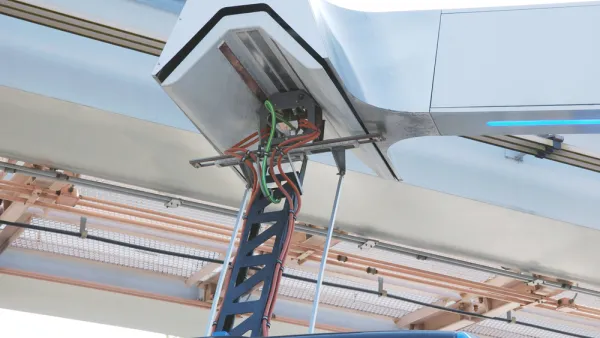In addition to reducing emissions, the agency officials hope the climate action plan will help increase ridership and boost their competitiveness when applying for federal transit funding.

The Pittsburgh Regional Transit agency has set a goal to reach net zero carbon emissions by 2045 as part of the city’s first climate action plan, according to 90.5 WESA, Pittsburgh’s NPR news station. “The agency plans to reduce the 104.5 million tons of carbon emissions it produces each year by expanding its electric bus fleet, purchasing light rail cars that use less electricity and switching to solar power to run their buildings,” writes Julia Fraser. It also aims to get more people to ride buses, both to reduce emissions and to keep their transit system solvent.
Increasing ridership is an ambitious goal, as transit ridership in both Pittsburgh and across the country dipped when the pandemic hit and has been slow to rebound. “Pittsburgh’s ridership only rebounded back to 64% of its pre-pandemic level for that week. And so far this year, fewer Pittsburghers have taken transit than in 2023, according to Pittsburgh Regional Transit data,” Fraser reports.
Buses are the biggest source of emissions for the agency and therefore the area where it can make the biggest impact. But with only nine electric buses (and 14 more on the way, according to the article) out of a fleet of 729 diesel vehicles, it will be a while before they reach their 100 percent electric goal, particularly given the challenges installing charging infrastructure and retraining mechanics, as well as growing pains the electric bus industry has faced lately. The city is also looking into hydrogen-cell-fueled buses as an alternative. It will also be expensive, as the agency already faces a “fiscal cliff” as federal pandemic relief money comes to an end this year. But just having a climate plan enables the agency to go after more money and stay competitive for current funding, Derek Dauphin, director of planning and service development at Pittsburgh Regional Transit, told 90.5 WESA.
FULL STORY: Pittsburgh Regional Transit climate plan aims to increase ridership, reduce emissions

National Parks Layoffs Will Cause Communities to Lose Billions
Thousands of essential park workers were laid off this week, just before the busy spring break season.

Retro-silient?: America’s First “Eco-burb,” The Woodlands Turns 50
A master-planned community north of Houston offers lessons on green infrastructure and resilient design, but falls short of its founder’s lofty affordability and walkability goals.

Delivering for America Plan Will Downgrade Mail Service in at Least 49.5 Percent of Zip Codes
Republican and Democrat lawmakers criticize the plan for its disproportionate negative impact on rural communities.

Test News Post 1
This is a summary

Test News Headline 46
Test for the image on the front page.

Balancing Bombs and Butterflies: How the National Guard Protects a Rare Species
The National Guard at Fort Indiantown Gap uses GIS technology and land management strategies to balance military training with conservation efforts, ensuring the survival of the rare eastern regal fritillary butterfly.
Urban Design for Planners 1: Software Tools
This six-course series explores essential urban design concepts using open source software and equips planners with the tools they need to participate fully in the urban design process.
Planning for Universal Design
Learn the tools for implementing Universal Design in planning regulations.
EMC Planning Group, Inc.
Planetizen
Planetizen
Mpact (formerly Rail~Volution)
Great Falls Development Authority, Inc.
HUDs Office of Policy Development and Research
NYU Wagner Graduate School of Public Service





























